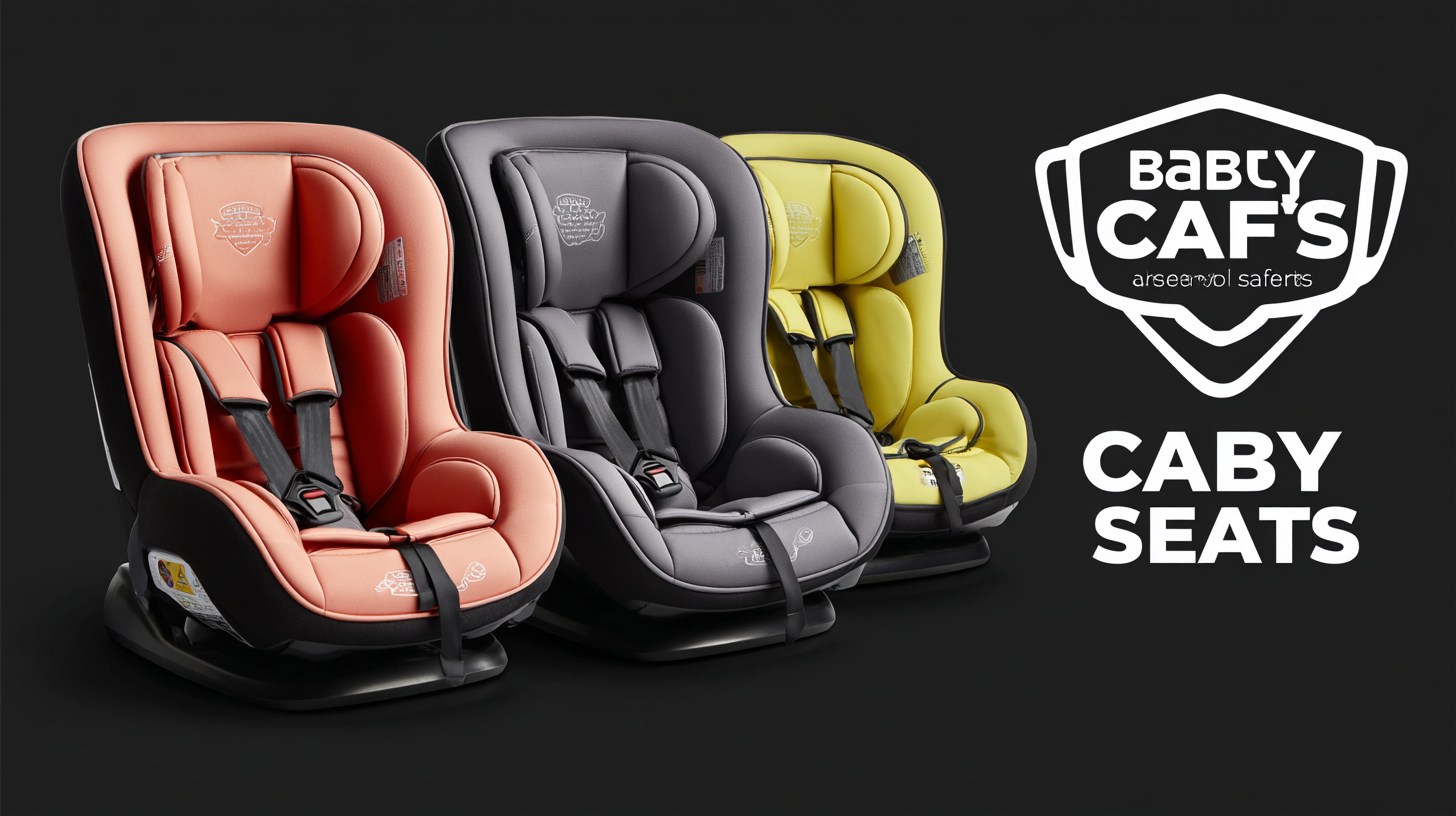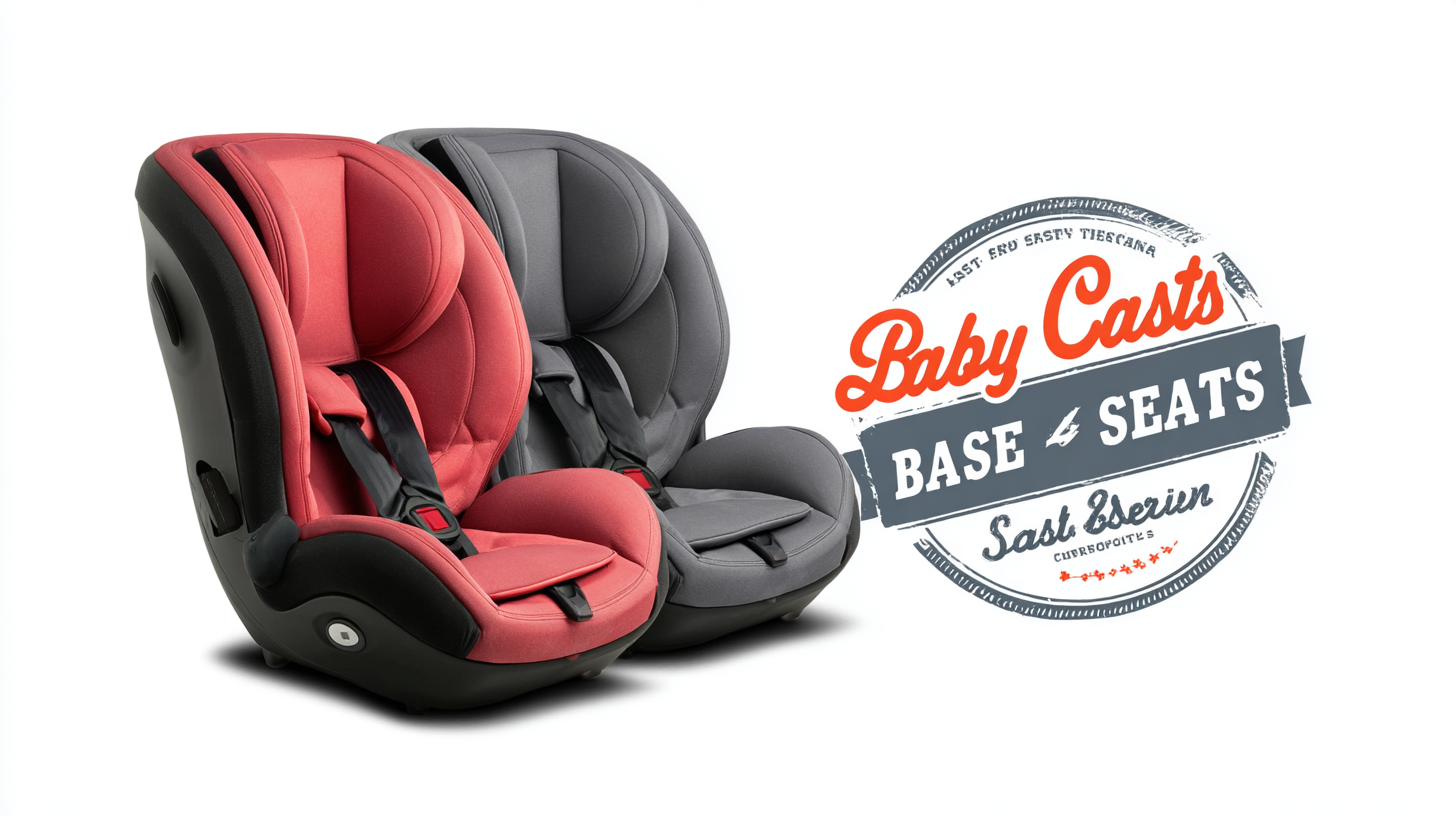Choosing the right baby car seats is a critical decision that every parent must face, impacting not only the safety of their little ones but also their overall peace of mind while traveling. With a myriad of options available, each boasting various features and benefits, understanding the international safety standards that govern baby car seat design and functionality can be daunting.

This blog will delve into the complexities surrounding the selection of baby car seats, examining how different types can cater to diverse needs while adhering to global safety regulations. By shedding light on the benefits of various baby car seat designs, we aim to empower parents with the knowledge necessary to make informed choices, ensuring optimal protection for their children during every journey.
Whether you're a first-time parent or seeking an upgrade, this guide will serve as a valuable resource in navigating the intricate world of baby car seats.
When selecting a baby car seat, one of the most vital aspects to consider is whether it meets global safety standards. Choosing a car seat that adheres to these standards can significantly enhance your child's protection during travel. According to a report by the National Highway Traffic Safety Administration (NHTSA), proper use of car seats can reduce the risk of injury in a crash by as much as 71% for infants and 54% for toddlers. This statistic underscores the importance of ensuring the car seat you select complies with established safety regulations.
To maximize safety, parents should look for car seats certified by international organizations such as the American Society for Testing and Materials (ASTM) and the European Committee for Standardization (CEN). These certifications signal that the car seat has undergone rigorous testing to ensure it adheres to strict safety protocols. As a quick tip, always register your car seat with the manufacturer to receive updates on recalls or safety notices. This simple action can enhance your child's safety significantly.
Additionally, consider the longevity of the car seat. Options that accommodate children from birth to booster seat age provide extended use and often adhere to evolving safety standards. When shopping for a car seat, check for features like side-impact protection and energy-absorbing foam, which can offer extra security. Always consult trusted resources for the latest safety ratings and guidelines to make an informed purchase.
| Aspect | Description | Global Safety Standards | Benefits |
|---|---|---|---|
| Crash Test Results | Evaluation of the seat's performance in simulated crash scenarios. | Meets or exceeds standards set by FMVSS, ECE, or other global organizations. | Increased safety for the child in the event of an accident. |
| Ease of Installation | The simplicity and clarity of the setup process. | Adheres to guidelines for secure installation as per international safety requirements. | Reduces the risk of incorrect installation and enhances safety. |
| Age and Size Appropriateness | Suitability of the car seat for the child's age, weight, and height. | Conforms to age and size categories established by global standards. | Ensures maximum protection tailored to the child's growth. |
| Material Safety | Use of non-toxic, durable materials in construction. | Complies with testing for harmful substances as per regulatory bodies. | Minimizes health risks while providing longevity. |
| Adjustability | Features that allow for customization of the seat’s fit over time. | Adheres to ergonomic guidelines for adaptability. | Extends usability as the child grows, enhancing safety for longer periods. |
When it comes to selecting the best baby car seats, safety ratings play a crucial role in ensuring the protection of our little ones during travel. Various organizations and regulatory bodies conduct extensive tests to evaluate car seats under different conditions, providing parents with a clear picture of which products meet the necessary safety standards. These ratings not only assess crashworthiness but also examine features such as ease of installation, usability, and additional safety features like side-impact protection. As a result, parents are empowered to make informed decisions based on these comprehensive evaluations.
 The impact of safety ratings on baby car seat selection cannot be overstated. Higher-rated car seats often incorporate the latest technology and innovation, providing advanced safety features that can significantly reduce the risk of injury in case of an accident. Since standards may vary globally, parents should be vigilant about choosing seats that not only meet local safety regulations but also excel in international safety tests. Understanding the nuances of safety ratings can help parents navigate the overwhelming options available and prioritize their child's safety above all else.
The impact of safety ratings on baby car seat selection cannot be overstated. Higher-rated car seats often incorporate the latest technology and innovation, providing advanced safety features that can significantly reduce the risk of injury in case of an accident. Since standards may vary globally, parents should be vigilant about choosing seats that not only meet local safety regulations but also excel in international safety tests. Understanding the nuances of safety ratings can help parents navigate the overwhelming options available and prioritize their child's safety above all else.
When it comes to ensuring infant safety in vehicles, crash testing plays a pivotal role in identifying the effectiveness of baby car seats. Manufacturers are required to rigorously test each model against a variety of crash scenarios to simulate real-life accidents. This testing involves assessing how the car seat restrains an infant during a collision, focusing on factors such as the materials used, harness systems, and overall design integrity. The results provide valuable insight not only to manufacturers but also to parents looking to make informed decisions.
Understanding the outcomes of these crash tests can greatly influence consumer choice. Different regions have varying safety standards, which can lead to confusion for parents who travel or relocate. It is crucial to be aware of the specific testing protocols that a car seat undergoes, as well as the ratings it receives. These ratings can serve as a reliable guide, ensuring that parents select a car seat that meets or exceeds safety benchmarks. By prioritizing car seats with robust crash test results, parents can ensure that their infants are well-protected during travel.

When selecting the ideal baby car seat, understanding the key features that contribute to optimal protection is essential. First and foremost, parents should look for a car seat that meets or exceeds safety standards established by national and international regulations. This includes evaluating whether the car seat has been rigorously crash-tested and adheres to the latest safety certifications. Additionally, features such as a sturdy five-point harness system, adjustable head support, and side-impact protection are crucial for safeguarding infants and toddlers during travel.
Another vital aspect to consider is the car seat's installation mechanism. A user-friendly installation process, whether using the LATCH system or seatbelt, ensures that the car seat is securely fitted in the vehicle. Parents should also prioritize car seats that provide versatility in terms of growth, opting for convertible car seats that adapt from rear-facing for infants to forward-facing for toddlers.
Lastly, ease of cleaning and maintenance is a significant feature; removable, machine-washable covers can make a substantial difference in day-to-day usability, keeping the car seat fresh and hygienic. By focusing on these critical features, parents can enhance their baby's safety and comfort on the road.
Proper installation of baby car seats is crucial for ensuring that they perform effectively in the event of a crash. According to a study conducted by the National Highway Traffic Safety Administration (NHTSA), approximately 59% of car seats are misused in a way that could reduce their effectiveness during an accident. This statistic underscores the importance of following the manufacturer's installation guidelines closely and utilizing available resources, such as safety inspection stations or certified child passenger safety technicians.
The efficacy of a car seat is contingent not only on the quality and design of the seat but also on how it is installed. Research led by the American Academy of Pediatrics indicates that a correctly installed car seat can reduce the risk of death by as much as 71% for infants and 54% for toddlers in passenger vehicles. Parents and caregivers should take the time to learn the correct installation methods, which may vary based on the car seat model and vehicle. Resources such as online videos, manuals, and local workshops can provide valuable guidance to ensure that every child is safely secured on the road.
This chart illustrates the key issues affecting the effectiveness of baby car seats in relation to global safety standards. Proper installation is the leading factor contributing to safety, highlighting the need for education and resources for parents.
TradeManager
Skype
VKontakte

